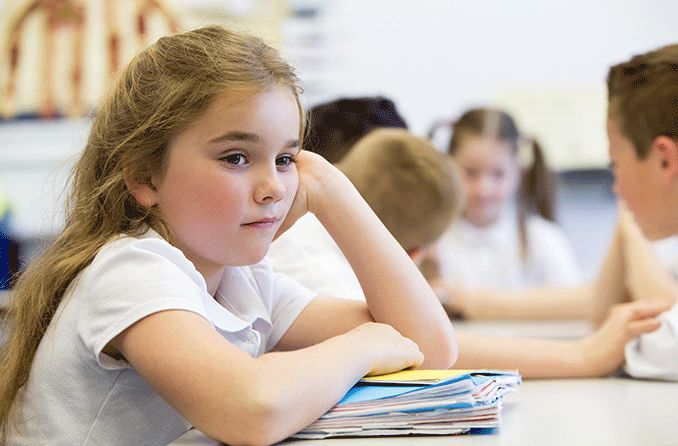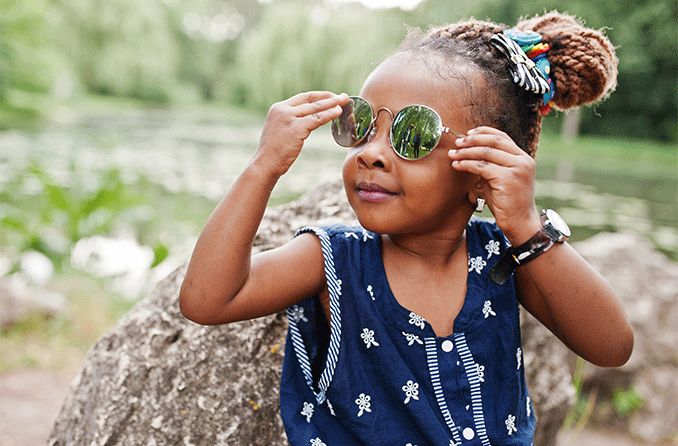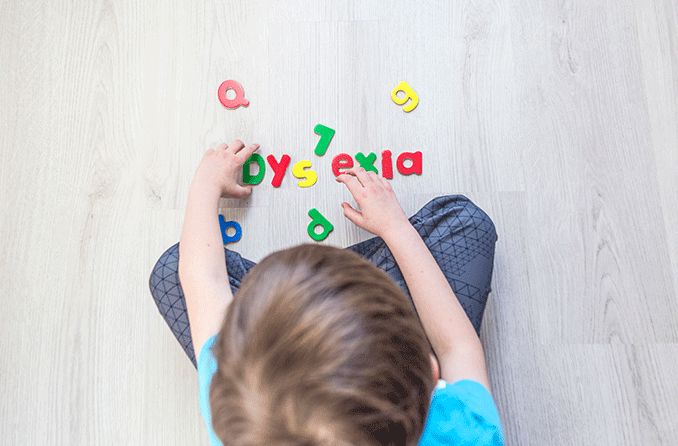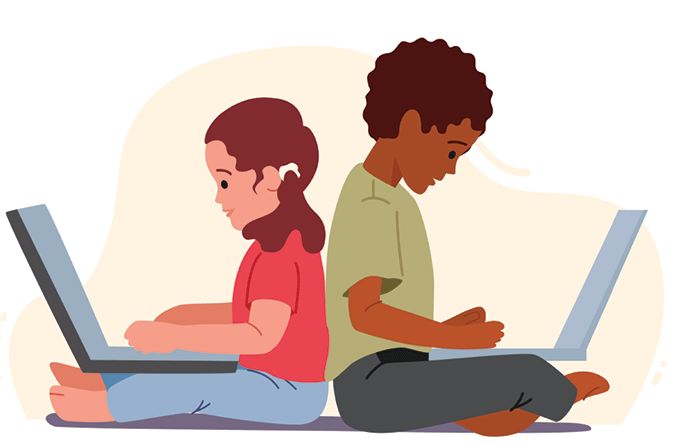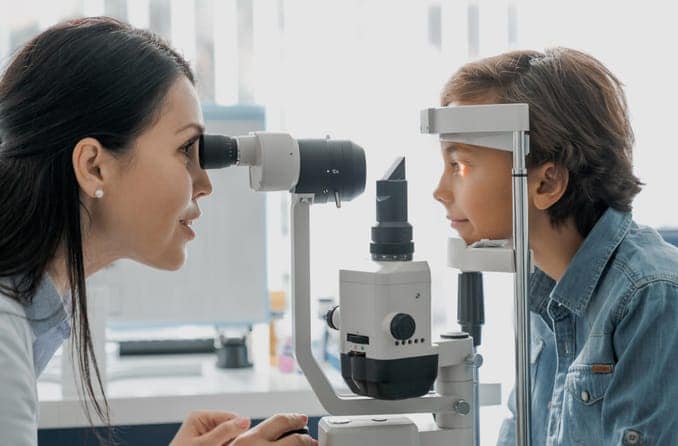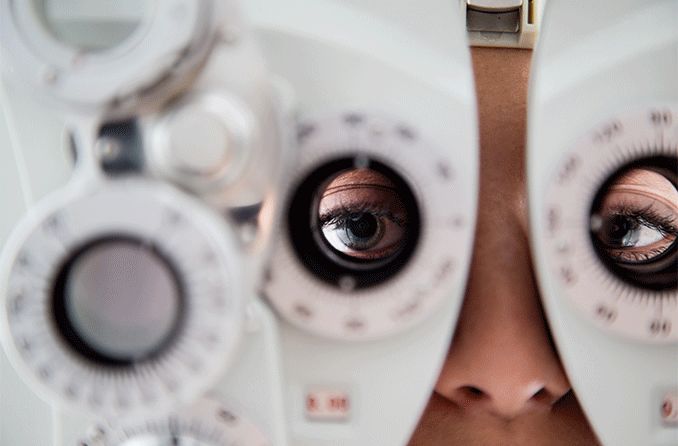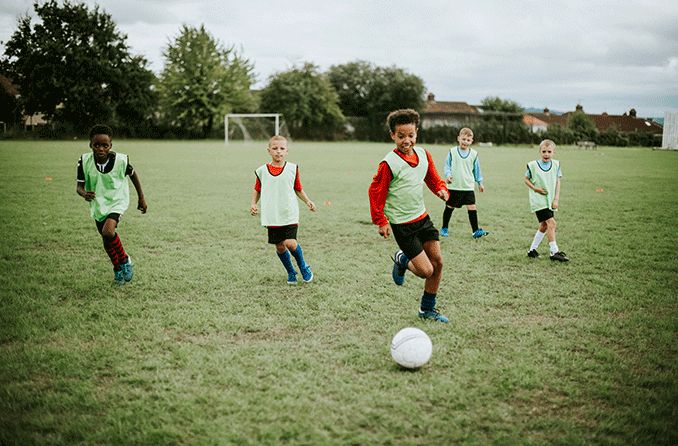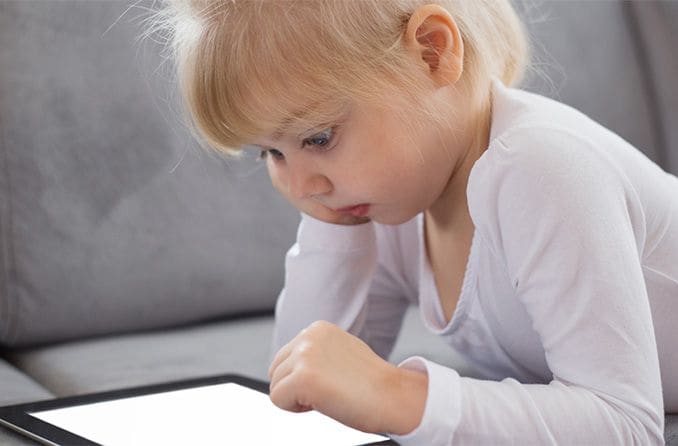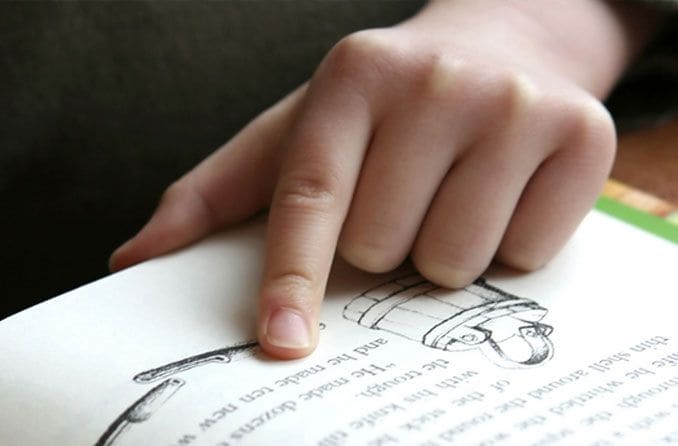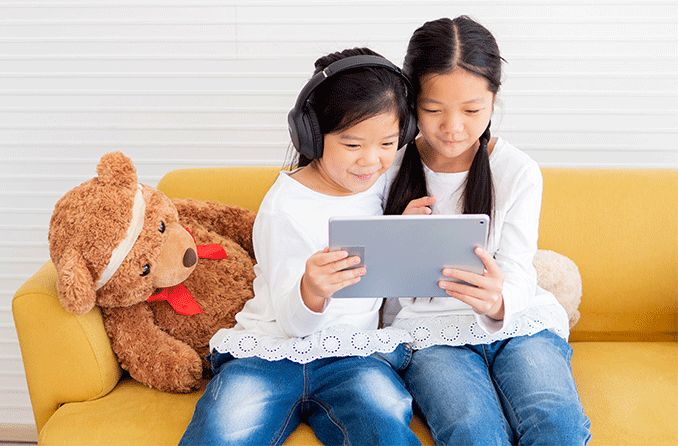How poor vision affects your child in school
Proper vision is required for all aspects of school, from reading a whiteboard or a book to being able to play during P.E. and recess. When kids have trouble with their eyesight, these daily tasks can become difficult and overwhelming.
Trying to focus on schoolwork is especially hard if you literally can’t focus. If your child has a vision problem, they may struggle to stay on task and understand assignments, both of which can lead to slipping grades.
Poor vision is not limited to visual acuity (the ability to see clearly). Children can also experience problems with:
- Hand-eye coordination
- Depth perception
- Eye tracking (following words on a page)
- Eye teaming (moving the eyes together in sync)
One or more of these issues can cause students to struggle in school, and you may see them face some of these challenges:
- Not being able to read the whiteboard or overhead slideshows
- Struggling to participate in physical activities during P.E. or recess
- Trouble reading books or worksheets, and consequently misunderstanding related assignments
- Inability to focus on computer or tablet screens
- Headaches from vision problems, which can make learning even more difficult
- Feeling discouraged or embarrassed because of their poor vision
- Losing their place while reading
SEE RELATED: Are learning-related vision issues holding your child back?
Vision problems of school-aged children
Learning and vision are strongly connected, and it’s important to be able to identify the signs of common vision problems. Knowing that will give you a better idea of what you can do to help your child.
Myopia (nearsightedness) is a refractive error that affects nearly 30% of the U.S. population. One of the most common vision issues among kids, it makes it difficult to see faraway objects clearly, such as whiteboards, signs and presentations. Myopia is typically managed with eyeglasses or contact lenses.
Having trouble seeing things that are far away isn’t the only vision issue a child may struggle with. Other common vision problems may include:
- Hyperopia (farsightedness). This refractive error makes close-up objects appear blurry. If left uncorrected, hyperopia can have profound negative effects on reading, writing, test-taking and learning.
- Functional vision problems. Difficulty moving your eyes together in one line is considered a functional vision problem. These conditions — such as strabismus (crossed eyes) and amblyopia (lazy eye) — can affect vision, academic performance and/or self-esteem.
- Vision perception problems. This is when it’s hard to connect a word to a picture of what that word represents in your brain. Note that perception issues are not related to visual clarity but instead to how a child’s brain interprets visual information.
- Color blindness. When a child is unable to recognize colors properly, it can affect their ability to play matching games or identify colors on a map. Color blindness is hereditary and found more often in males.
If you suspect your child is experiencing a problem with their vision, be sure to schedule an appointment for a comprehensive eye exam. This is the best way to get a proper assessment, diagnosis and treatment plan for your child.
SEE RELATED: 12 hidden signs your child may need glasses
Measurable benefits of proper vision in school children
Studies have shown that children who need vision correction have improved success in school after getting glasses, including lifts in learning and reading scores. Many students also improve their concentration in the classroom after receiving vision correction.
Case study: Vision for Baltimore
After data determined that 25% of Baltimore public school system students needed glasses, Vision for Baltimore launched to provide free eye care and eyewear to children in need.
In the years since its inception, Vision for Baltimore has reached several milestones, including:
- 64,000 vision screenings
- 11,000 eye exams
- 7,900 pairs of glasses prescribed
- 137 schools serviced
A Johns Hopkins research team conducted a clinical study during the program's first three years. From 2016 to 2019, Vision for Baltimore provided eye screenings, exams and eyeglasses to 2,304 students. These students’ standardized test scores were evaluated and compared year by year.
After one year, there were significant improvements in the reading and math scores of students who received vision correction. It was also noted that the students who seemed to need the most help showed the greatest improvements.
With the help of the community, thousands of students have been able to improve their vision and their academics.
Case study: Vision to Learn
Other programs around the country have continued to expand on the same concept. One of these programs is Vision to Learn, a Los Angeles-based nonprofit (and partner of Vision for Baltimore) that provides screenings, exams and glasses for children in low-income families across 500 different cities in America.
They do so by partnering with schools and sending mobile eye clinics to campuses to provide comprehensive eye exams for those in need. After a student’s exam, they are provided with custom corrective eyeglasses or contact lenses within two weeks.
In 2013, UCLA’s Mattel Children’s Hospital performed a study on the program to record the advancements students made after receiving vision correction. A group of schools in California participated, and the results showed the following measurable improvements:
- Average math GPA increased within one year
- Average reading GPA increased within one year
There was once a stigma around getting glasses, but this disappeared after groups of students got glasses at the same time. The kids also showed excitement after being given the opportunity to choose their own frames.
Additionally, the study conducted interviews with parents and teachers to find out what they observed about students after they got the vision correction they needed.
Teachers explained that students who tended to create distractions seemed to be more engaged in the classroom once their vision improved. Parents reported that their children’s lives also improved at home and that their anxiety around going to school had lifted after they got glasses.
Overall, students showed improvements in concentration, which heightened their general performance in school.
What parents can do to help
Every child deserves the chance to do well in school, and every parent wants their child to have whatever they need to succeed. If a vision impairment is keeping your child from thriving at school, there are many things you can do to help, including:
- Talk to your child about school. Ask them how well they can concentrate, see the whiteboard, and read their books and worksheets.
- Look for signs of vision impairment. If you notice your child squinting while reading or doing homework, ask if they’re having trouble seeing the text on the page. Also look for a short attention span, eye rubbing, eye covering, head tilting, and holding books close to their face to read.
- Keep track of school vision screenings. School nurses perform vision screenings to check for possible issues. If your child doesn’t pass the vision screening, the nurse will refer you to an eye doctor for a comprehensive exam. Just be aware that vision screenings do not detect all vision issues. [Read more on eye exams vs. vision screenings.]
- Schedule a comprehensive eye exam every year. Regardless of when your child’s last vision screening was, regular comprehensive exams are still very important. Not all children's vision issues present with symptoms and vision screenings are not able to detect all vision issues.
- Encourage your child to wear their glasses or contact lenses. Many children struggle with wearing glasses for the first time. Remind them how cool they look and how much better they function in their new glasses. (And be sure to listen to their concerns as well — they may need an updated prescription or a frame adjustment for a better fit).
Teachers, coaches and other education leaders spend their days teaching and observing your child’s progress in school. If someone reaches out to you about your child’s vision, be sure to ask what they noticed so you can bring it up to your child’s eye doctor.
All these things can help support your child, their eye and vision health, and their academic performance.
READ NEXT: ADHD in children: 60-second assessment
